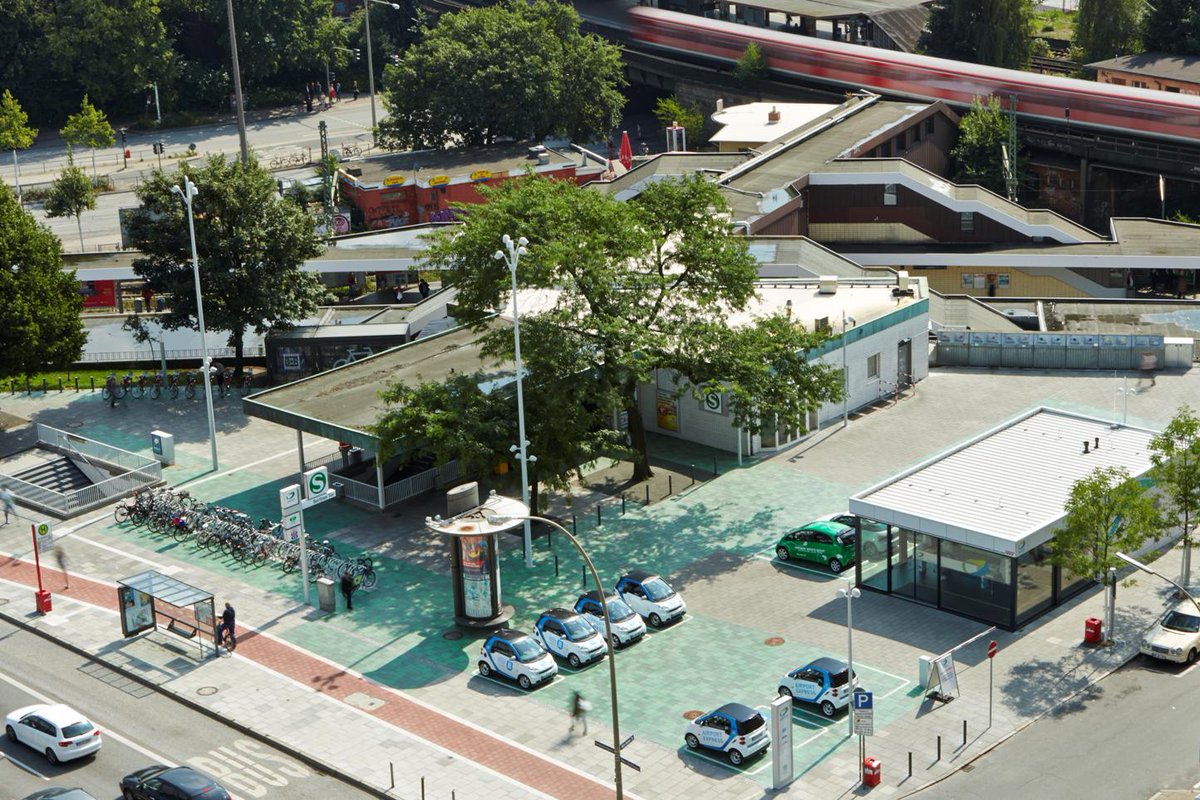
2018 was certainly an exciting year for mobility, but what will 2019 have in store for us? The list below will answer that question with our predictions of what’s going to take off in the new year.
Multimodal Trips
Some commutes don’t involve just one type of transportation — they can span across multiple modes depending on where your home and place of work are, hence multimodal commutes. Becoming multimodal is a trend that’s helped decrease commute times by replacing walking the rest of your trip with something that’s faster, easier, and cleaner than a car. Mutlimodal really helps to solve the first mile last mile dilemma that many of us face in our daily journeys.
For example, you may primarily rely on the metro or subway to cover the majority of your commute, but might not be so lucky to live right next to a station or work right next to one. You get on and off at the nearest stops but still have to walk about 20 minutes to get to your destination. This is where buses, electric scooters, electric bikes, and dockless bikes have come into hand. They’re an immediate solution that’s simple, cheap, and does exactly what it’s meant to.
Becoming multimodal can be an innovative and inexpensive way to help cities become smarter without causing much disruption. Yes, our metro and subway lines still need a little work, and that goes for other countries subterranean travels as well. But, thinking outside of the box with immediate solutions that don’t require construction or major transportation shutdowns are the exact ideas we need to continue into 2019. This is why becoming multimodal won’t stay in the past, but push us forward into the future of efficient commuting.
Upgrading the Bus Experience
They’re big, packed, and sometimes smelly, but that doesn’t mean you should put your nose up to them. Instead we should work on improving them because buses can transport more people in much less space than cars.
Photo provided by the Cycling Promotion Fund
Not to mention that they can put less stress on the environment than cars. LA has plans to switch to an electric-only fleet of buses by 2030; DC released multiple electric buses in April and May of 2018 and has plans to continue to grow in 2019; and China is currently leading the world in the number of electric buses they operate.
Schools are also considering the electric wave and are being encouraged by the US Public Interest Research Group (PIRG) Education Fund and the Environment American Research and Policy Center to hop on. This would be a very important step in decreasing pollution and implementing safer practices for children. School buses are an essential public transit need that creates a safe, social space for children and allows parents to skip the quick student drop off of standing in a kiss and ride line.
Scooter Regulations
We’ve talked about this before and anticipate that there will be many more conversations down the road as it becomes more apparent that scooters are here to stay. DC, one of the first major cities to pilot e-scooters and bikes, is accepting permit applications for scooters and bikes in 2019. This comes after the city has extended the pilot program for electric transportation, deciding now that they’re going to allow more scooters to enter. Scooter enthusiast are begging for even more than a fleet of 600, but others are worried that regulations aren’t set-in-stone to allow for more than the new increased cap.
To recap: scooters have had issues like improper placement (see this, this, and this), incorrect usage, accidents, and damages. San Jose is tackling some of these problems by imposing a permit similar to DC’s where scooter companies have to pay an annual fee as well as a fee per vehicle. On top of this new permit, scooter companies have until the summer of 2019 to come up with a plan that will keep scooters off the sidewalks. AND, not just San Jose, but many cities are decreasing the scooter speeds between 10-12 MPH — this is an attempt to make the streets safer.
Do you remember me talking about geofencing for rideshare? Cities are also thinking about using it for scooters, too. You know how some stores will have their shopping carts automatically lock when you venture too far from the store? Well, cities are thinking of implementing similar technology to solve the scooter issue of staying in your lane (or in this case, your county). Counties that have not accepted scooters have been having some difficulty keeping them out seeing as they’re dockless. Geofencing might just be the answer to keep scooters where they’re accepted and where they can’t be damaged.
Mobility Hubs

Photo provided by @multi_mobility on Twitter
As mobility options continue to expand and grow, people are innovating ways to keep everything as organized as possible — to be intuitive and efficient. Mobility hubs allow cities to combine multiple modes of transit together in a physical area. You can create charger stations for electric mobility options like scooters, bikes, even small quick trip cars.
We can also look to encourage more sustainable practices within individuals by placing mobility hubs strategically in urban and suburban areas. Adding mobility hubs in high parking areas can create a shift in what people will think as convenient. Many people are frustrated by high traffic areas that are hard or expensive to park in, so giving people the power to pick other options can change the way we look at mobility. The immediate thought won’t be a car, but possibly multimodal options that will save you time and money.




